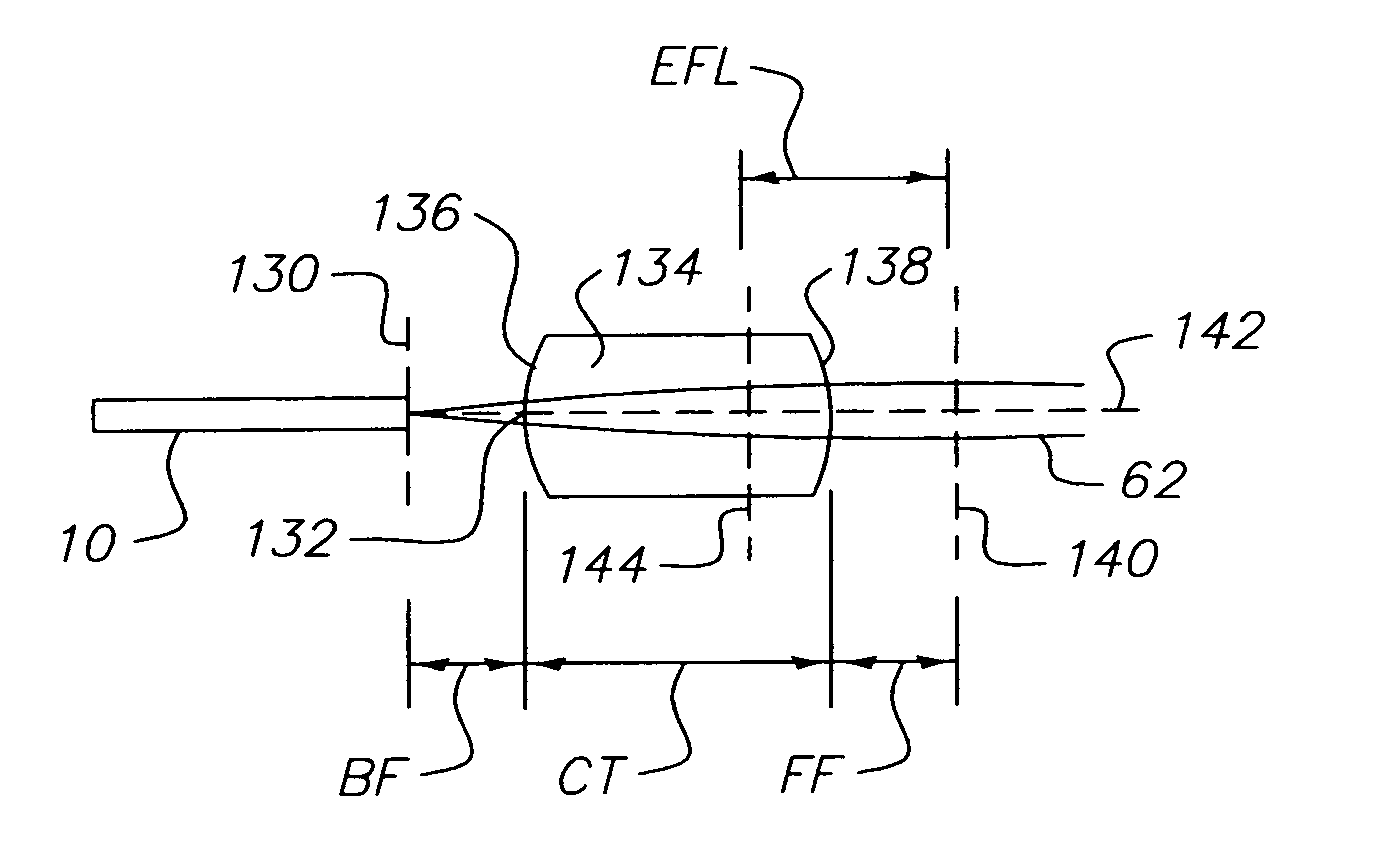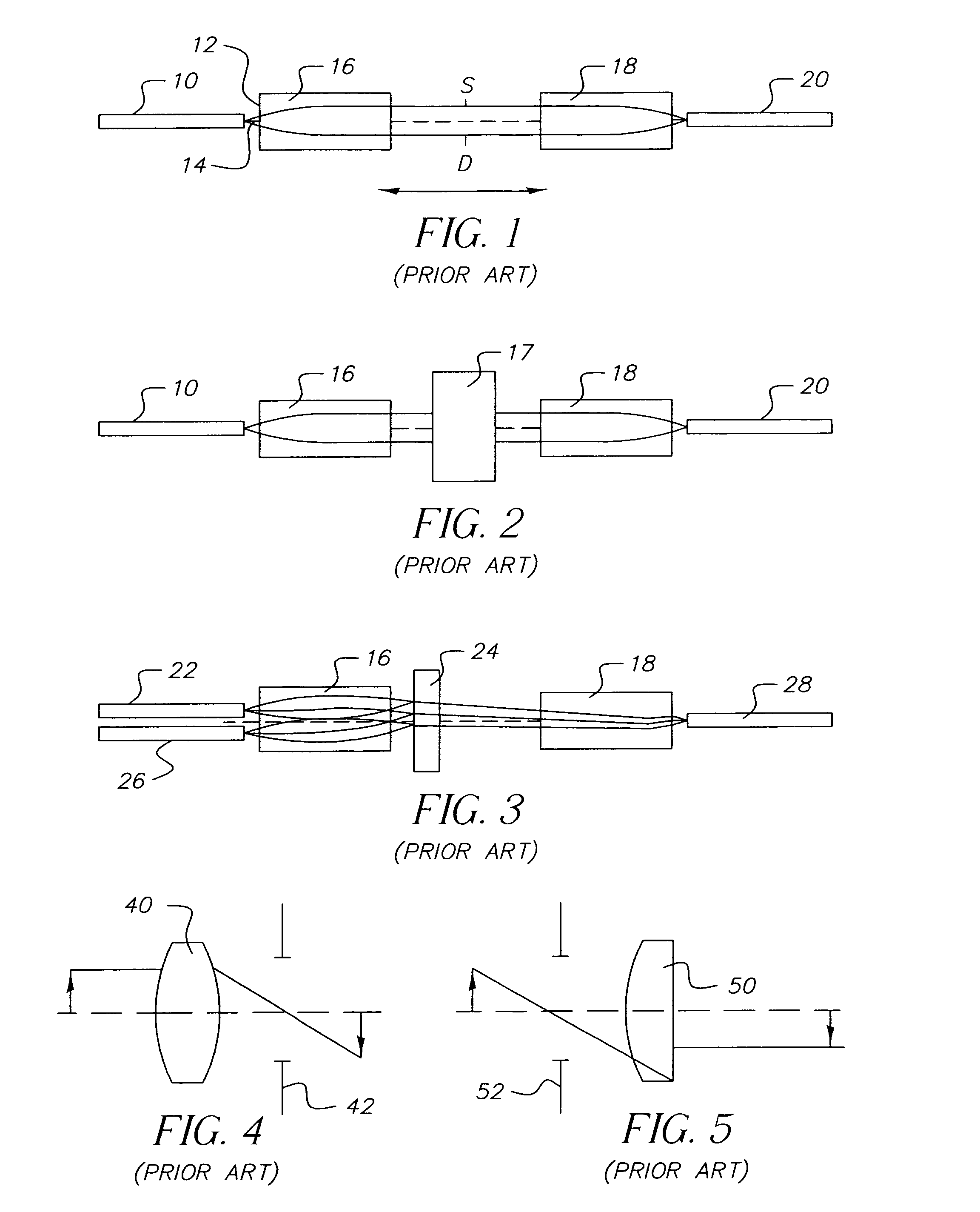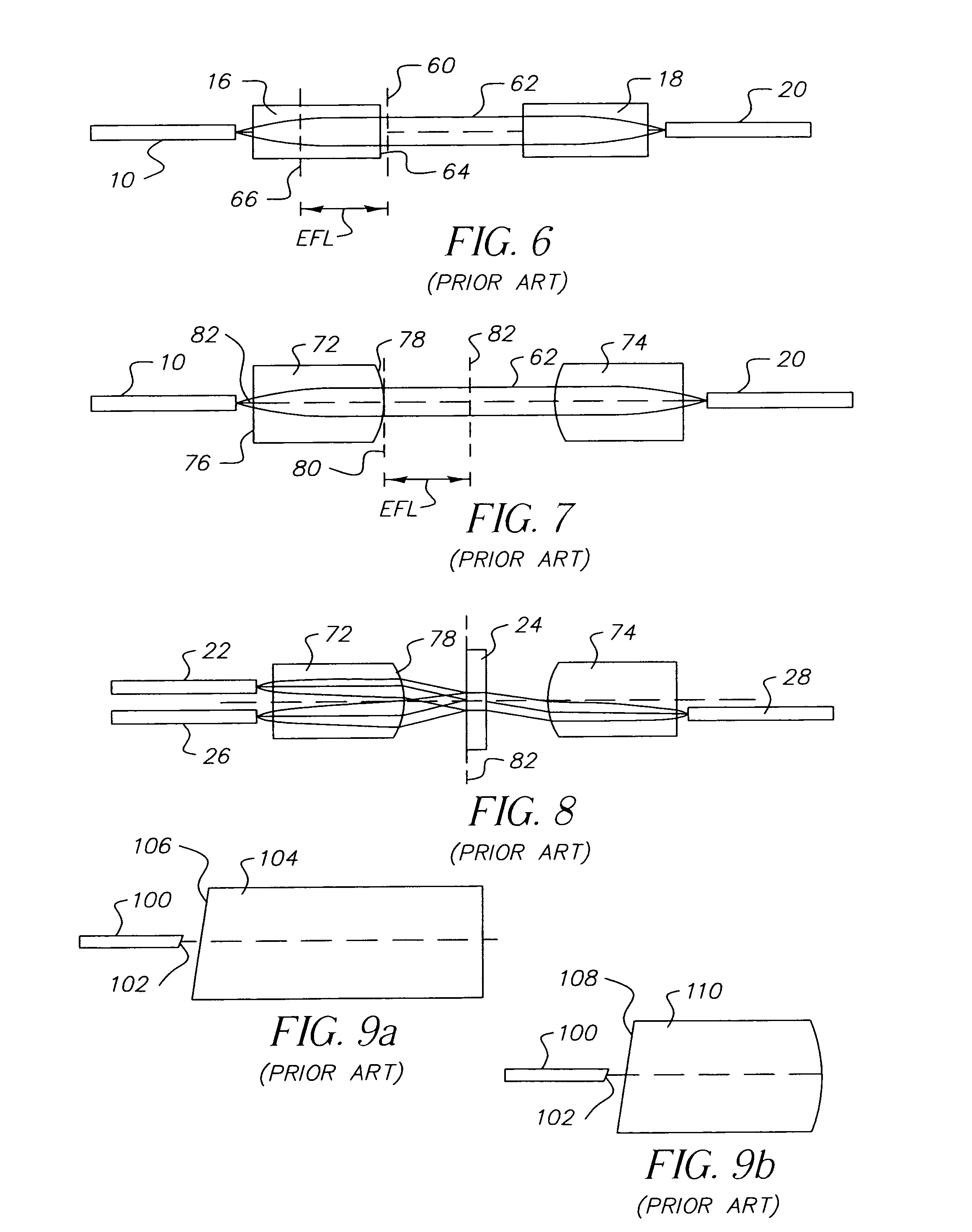Symmetric, bi-aspheric lens for use in optical fiber collimator assemblies
a collimator and optical fiber technology, applied in the field of symmetric bi-aspheric lenses for optical fiber collimator assemblies, can solve the problems of reducing the amount of required amplification, limiting the amount of information that can be transferred over a communication channel, and high loss of optical power in a fiber system, so as to reduce the strength of curves, improve the efficiency of manufacturing, and increase the index of glasses
- Summary
- Abstract
- Description
- Claims
- Application Information
AI Technical Summary
Benefits of technology
Problems solved by technology
Method used
Image
Examples
example 1
[0083]Example 1 has a symmetric bi-aspheric lens with an effective focal length of 1.944 and an index of refraction=1.50.[0084]Curvature of the first optical surface 1: 0.61903 mm−1 [0085]Conic constant of the first optical surface: k=−2.000878[0086]Center thickness: 1.64 mm.[0087]Curvature of the second optical surface 1: −0.61903 mm−1 [0088]Conic constant of the second optical surface: k=−2.000878[0089]Refractive index at 1550 nm: 1.50[0090]Back focal distance: 1.29 mm[0091]Front focal distance: 1.29 mm[0092]Effective focal length of individual lens: 1.944 mm[0093]Specified entrance pupil diameter: 1.0 mm on the convex surface.[0094]Axial rms wavefront error: 0.001 waves.
example 2
[0095]Example 2 has a symmetric bi-aspheric lens with an effective focal length of 1.944 and an index of refraction=1.60.[0096]Curvature of the first optical surface 1: 0.527295 mm−1 [0097]Conic constant of the first optical surface: k=−2.185689[0098]Center thickness: 1.89 mm.[0099]Curvature of the second optical surface 1: −0.527295 mm−1 [0100]Conic constant of the second optical surface: k=−2.185689[0101]Refractive index at 1550 nm: 1.60[0102]Back focal distance: 1.22 mm[0103]Front focal distance: 1.22 mm[0104]Effective focal length of individual lens: 1.944 mm[0105]Specified entrance pupil diameter: 1.0 mm on the convex surface.[0106]Axial rms wavefront error: 0.001 waves.
example 3
[0107]Example 3 has a symmetric bi-aspheric lens with an effective focal length of 1.944 and an index of refraction=1.70.[0108]Curvature of the first optical surface 1: 0.461127 mm−1 [0109]Conic constant of the first optical surface: k=−2.366173[0110]Center thickness: 2.14 mm.[0111]Curvature of the second optical surface 1: −0.461127 mm−1 [0112]Conic constant of the second optical surface: k=−2.366173[0113]Refractive index at 1550 nm: 1.70[0114]Back focal distance: 1.15 mm[0115]Front focal distance: 1.15 mm[0116]Effective focal length of individual lens: 1.944 mm[0117]Specified entrance pupil diameter: 1.0 mm on the convex surface.[0118]Axial rmis wavefront error: 0.0008 waves.
PUM
 Login to View More
Login to View More Abstract
Description
Claims
Application Information
 Login to View More
Login to View More - R&D
- Intellectual Property
- Life Sciences
- Materials
- Tech Scout
- Unparalleled Data Quality
- Higher Quality Content
- 60% Fewer Hallucinations
Browse by: Latest US Patents, China's latest patents, Technical Efficacy Thesaurus, Application Domain, Technology Topic, Popular Technical Reports.
© 2025 PatSnap. All rights reserved.Legal|Privacy policy|Modern Slavery Act Transparency Statement|Sitemap|About US| Contact US: help@patsnap.com



